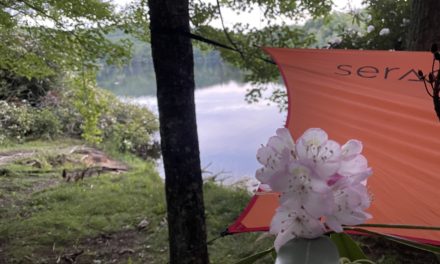Beaches–idyllic vacation spots the world over. Something about where the water meets the shore–entrancing. With a morning left on our stay on Skye, we set out for the tiny town of Elgol, a dot on the map at the end of a B road on a southern peninsula.
 First, a note about our lodging before we leave. While Nic will struggle with what to say on the AirBnB site, I’ll put it like this. Our lodging was at a 17th century Scottish Manor, and it is a unique site. I’ve enjoyed our stay: we’ve met four other lodgers from the Netherlands and one lady from the Bay Area who is convinced the economy is going to tank before the American election, so she’s spending her money traveling before the shit hits the fan. We are right on a sound across from Ramasay in the north of Skye. But there is a certain vibe about this place. When Nic and I first got I our room on Tuesday, we barely spoke above a whisper. There was something creepy, vaguely haunted house, Watcher in the Woods-type vibe. Not enough to scare is off. Just enough to keep it interesting.
First, a note about our lodging before we leave. While Nic will struggle with what to say on the AirBnB site, I’ll put it like this. Our lodging was at a 17th century Scottish Manor, and it is a unique site. I’ve enjoyed our stay: we’ve met four other lodgers from the Netherlands and one lady from the Bay Area who is convinced the economy is going to tank before the American election, so she’s spending her money traveling before the shit hits the fan. We are right on a sound across from Ramasay in the north of Skye. But there is a certain vibe about this place. When Nic and I first got I our room on Tuesday, we barely spoke above a whisper. There was something creepy, vaguely haunted house, Watcher in the Woods-type vibe. Not enough to scare is off. Just enough to keep it interesting.
https://youtu.be/WTXIqkvcaQE
The overcast skies certainly led to that vibe. It also kept us from even nominal hike on Thursday. With only a few hours before we left the island we quickly left the A87 for a single lane. Google maps estimated we could be there in 33 minutes, but Google Maps has been underestimating the length of our drives all week. For one, Google Maps never accounts the number of sheep and/or cows that are likely to be using the road. Next, it also underestimated how many times you have to pull off the road to let the other cars slide by. Also, it neglects the times you might take a wrong the at Albequerque and end up in someone’s yard.
 But it also neglects the time you’ll slow down to take in the view. To be honest, when I compare my driving to sue I first got behind the left-handed wheel, I’m kind of driving like a rally car driver. That is until I reach the shores of Loch Eishort, where intrepid campers had brough theirs tents shoreside on slivers of land to wake up to the water, setting me daydreaming about car camping and kayaking on this seemingly infinite surface. I slowly round the corner to take it all in.
But it also neglects the time you’ll slow down to take in the view. To be honest, when I compare my driving to sue I first got behind the left-handed wheel, I’m kind of driving like a rally car driver. That is until I reach the shores of Loch Eishort, where intrepid campers had brough theirs tents shoreside on slivers of land to wake up to the water, setting me daydreaming about car camping and kayaking on this seemingly infinite surface. I slowly round the corner to take it all in.
 Soon the road headed back over the mountain. Nic began to worry that we were never going to get there. The rain continued. Then, we passed a lone gift shop and took a ninety degree turn to the left that went strait down the hill. There, we found the village of Elgol.
Soon the road headed back over the mountain. Nic began to worry that we were never going to get there. The rain continued. Then, we passed a lone gift shop and took a ninety degree turn to the left that went strait down the hill. There, we found the village of Elgol.
By village, I mean a dock where boat rentals take off into the sea, a primary school, and as many houses as I can count on my hand, and a roaring stream–swollen on two days of constant rain–dumping into the ocean.
[wpvideo R7pNTdMM] I pull into the parking lot and turn off the car. “Where are you going?” Nic asks.
“Over there,” I say, somewhat simplistically. After all, you don’t come all the way to the beach to sit in the car.
I get her trepidation, though. “Over there” his a daunting cliff hanging over the water over a field of rocks. And it’s still raining. But she gives in and follows me.
When you say to your wife, “let’s go to the beach,” you usually think lolling in the sun, drink in hand, toes in the sand. There was none of that. Instead I brought her to slick rocks and cold rain–not exactly your romantic getaway.
But there’s something about this that speaks to me, and fortunately Nic indulges this. The rocks are massive, worn bythe ocean. And rather than a soft in-and-out of waves, the collision of water on rock is harsh and violent. As a child, I my beaches were the Cape Cod and Prince Edward Island, neither of which are your stereotypical resort beaches. There’s no docile lull or nap to be had.

 Nic asks me to climb on some rocks to take a picture, and it unleashes my childish whimsy, climbing, skipping, staring at the crashing waves with wonder.
Nic asks me to climb on some rocks to take a picture, and it unleashes my childish whimsy, climbing, skipping, staring at the crashing waves with wonder.
 Don’t get me wrong: I love relaxing beaches, too. But there is something majestic and contemplative in this solitude, something adventurous about keeping balance skipping across the rocks that you don’t get on a soft beach. Camus once wrote
Don’t get me wrong: I love relaxing beaches, too. But there is something majestic and contemplative in this solitude, something adventurous about keeping balance skipping across the rocks that you don’t get on a soft beach. Camus once wrote
“At the heart of all beauty lies something inhuman, and these hills, the softness of the sky, the outline of these trees at this very minute lose the illusory meaning with which we had clothed them, henceforth more remote than a lost paradise. The primitive hostility of the world rises up to face across the millenia.”
Soft beaches can lure us into comfort. Hard beaches never allow us to forget our precarious footing. For me, soft beaches are Isle of Palms, Buxton, the Bahamas, Florida, St. Lucia–lolling days of playfulness. Hard beaches are where my brother was stung by a jellyfish at PEI, where I slipped and fell on wet rocks after running down to the Pacific in Lima, where I learned to walk on unsteady rocks at the Cape.


I walk past where the salt water wind has torn into the cliff face and place a couple of stones. Nic has begun to make her way to the car. I take one long last listen to the crashing waves and head back.
Back on the road, I drive more slowly. People politely let each other go by, there’s only so much safe land, and we all have to share it. We are drenched, but despite the less than optimal weather, I am entranced by this remote North Atlantic island, and hope my journeys bring me back one day.



Recent Comments